Impulsive X1.2 solar flare erupts from AR 3256
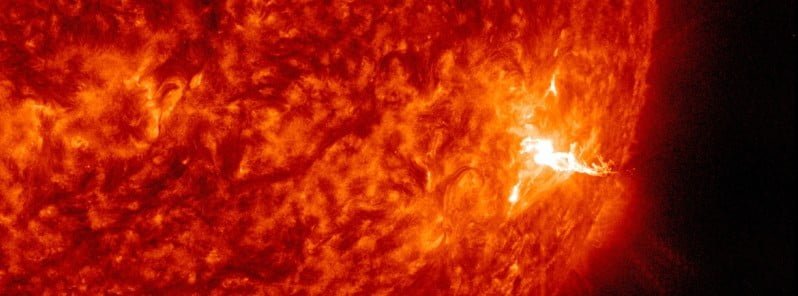
An impulsive solar flare measuring X1.2 at its peak erupted from AR 3256 at 02:33 UTC on March 29, 2023. The event started at 02:18 and ended at 02:40 UTC.
A coronal mass ejection (CME) was produced but it’s well ahead of Earth’s orbit.
Radio frequencies were forecast to be most degraded over the West Pacific Ocean, parts of eastern China and Russia, Vietnam, Laos, Thailand, Cambodia, Japan, Philippines, Indonesia, Papua New Guinea, and Australia.
Region 3256 is now approaching the west limb and will start its farside rotation in a couple of days.
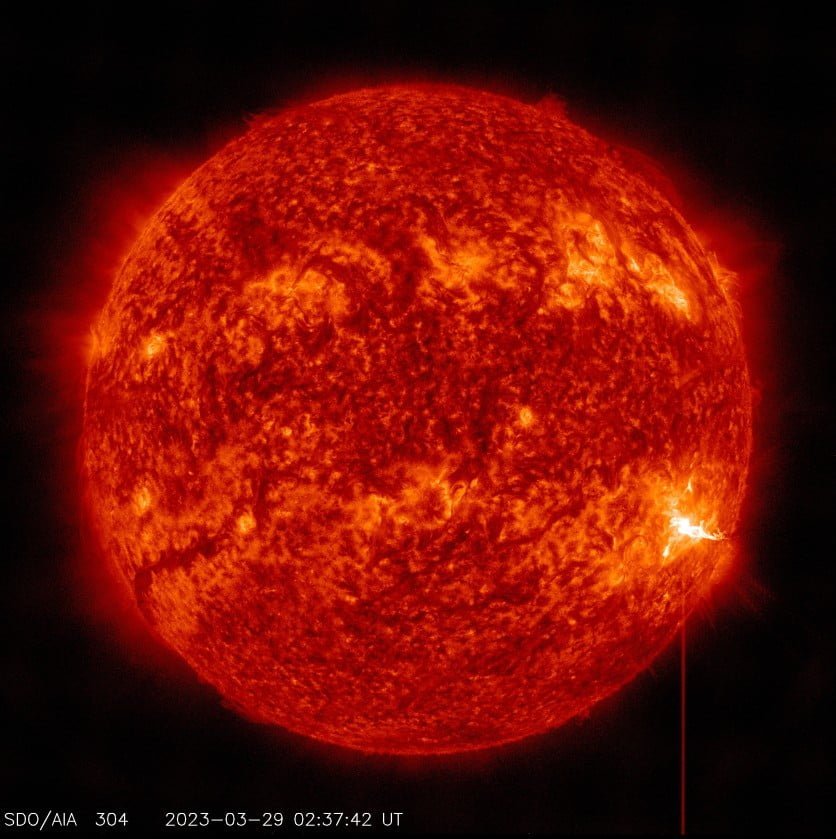
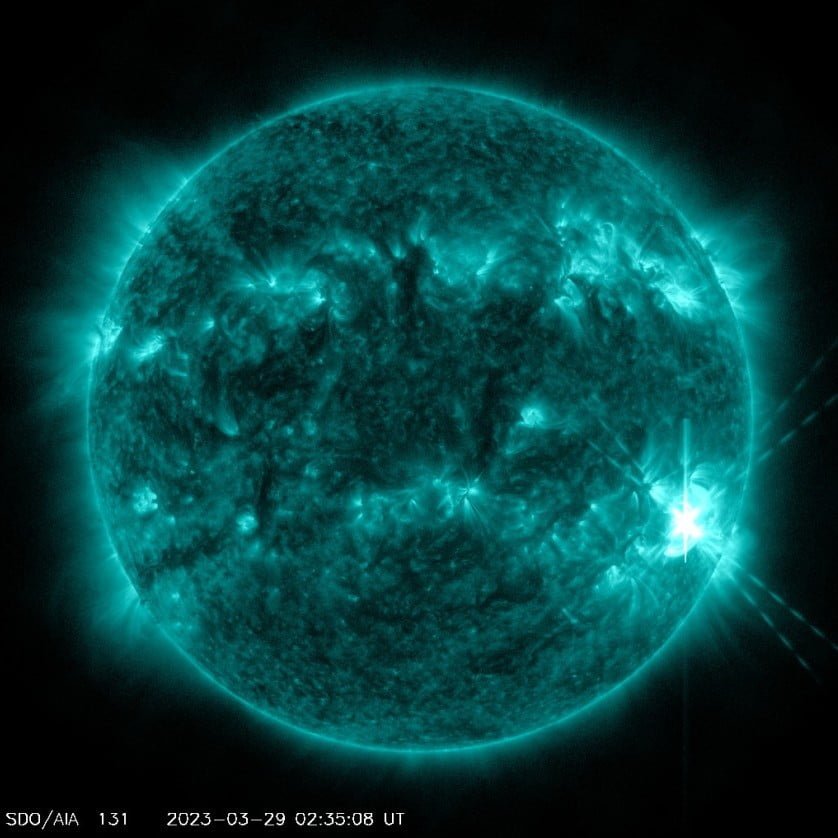
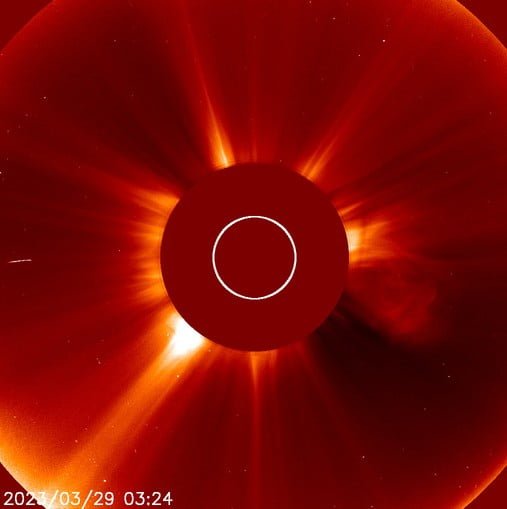
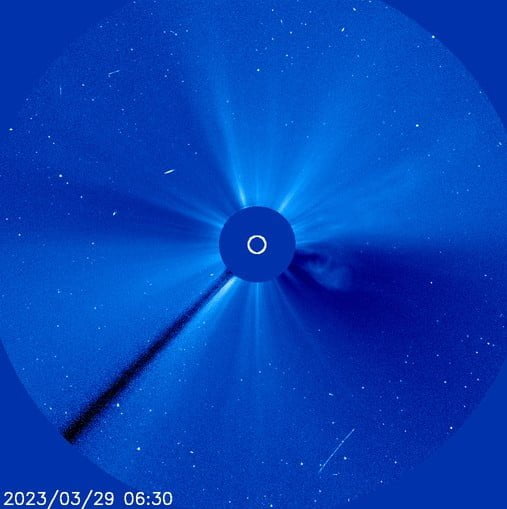
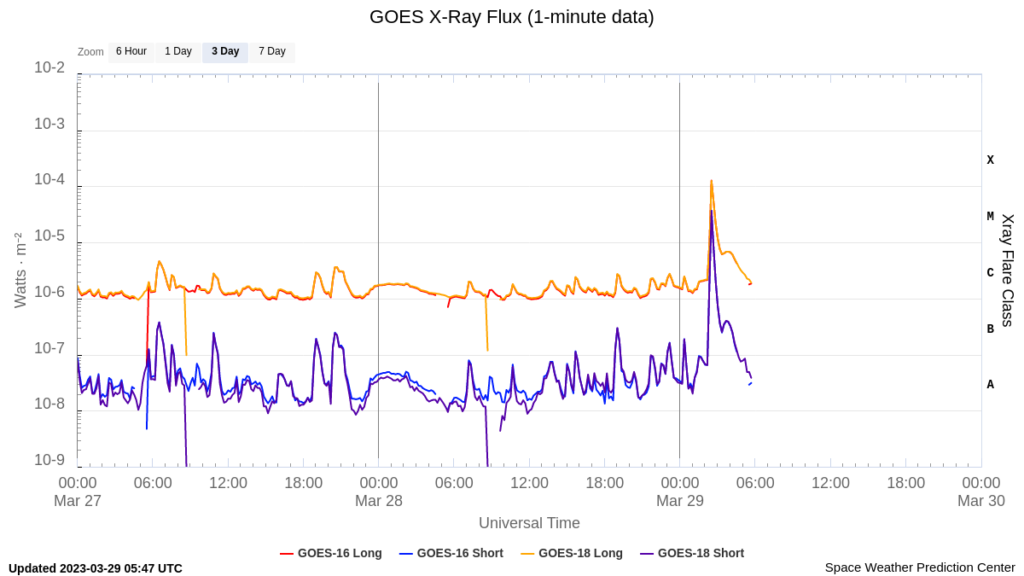
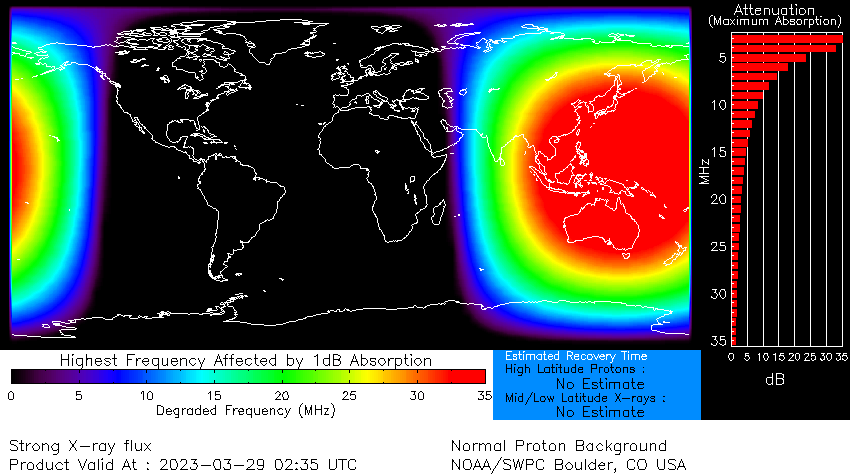
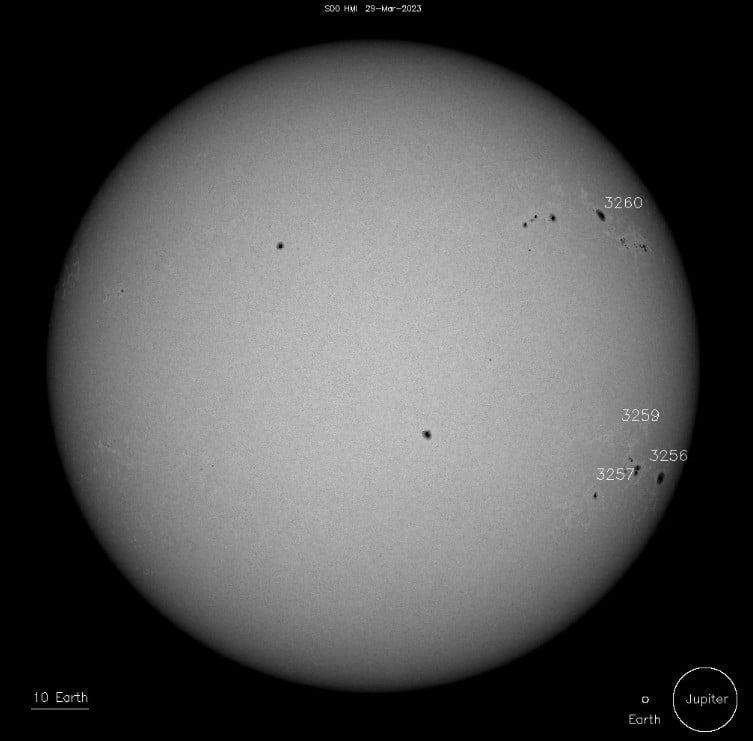
Solar activity was at low levels until this solar flare and is expected to be at low levels, with a slight chance for M-class flares through March 31.
The greater than 10 MeV proton flux was at background levels and the greater than 2 MeV electron flux reached high levels with a peak flux of 1 810 pfu observed at GOES-16 at 14:20 UTC on March 28.1
The greater than 10 MeV proton flux is expected to continue at background levels through March 31. The greater than 2 MeV electron flux is expected to reach high levels through March 31, possibly decreasing to moderate levels on March 30 with the arrival of the next negative polarity CH HSS.
Solar wind parameters were mostly at background levels in 24 hours to 00:30 UTC on March 29. The IMF was relaxed with total field averaging around 6 nT and Bz undergoing few if any significant southward deviations. Wind speeds were unreliable from DSCOVR given the low density environment, but ACE showed speeds generally at 400 km/s or less. The phi angle was oriented in a negative solar sector towards the Sun. Nominal levels are expected to continue through March 29 and the first half of March 30. Another negative polarity CH HSS is forecast to arrive midday on March 30, with elevated levels of activity lasting through March 31.
The geomagnetic field was at quiet levels on March 29. Mostly quiet levels are expected on March 29 and the first half of March 30.
Active conditions are expected starting midday on March 30 through March 31 with the onset of a negative polarity CH HSS. There is also a chance for G1 – Minor geomagnetic storms on March 30 and 31 with this activity.
References:
1 Forecast Discussion – Issued: 2023 Mar 29 0030 UTC – Prepared by the U.S. Dept. of Commerce, NOAA, Space Weather Prediction Center
Featured image credit: NASA SDO/AIA 304, The Watchers

Commenting rules and guidelines
We value the thoughts and opinions of our readers and welcome healthy discussions on our website. In order to maintain a respectful and positive community, we ask that all commenters follow these rules.